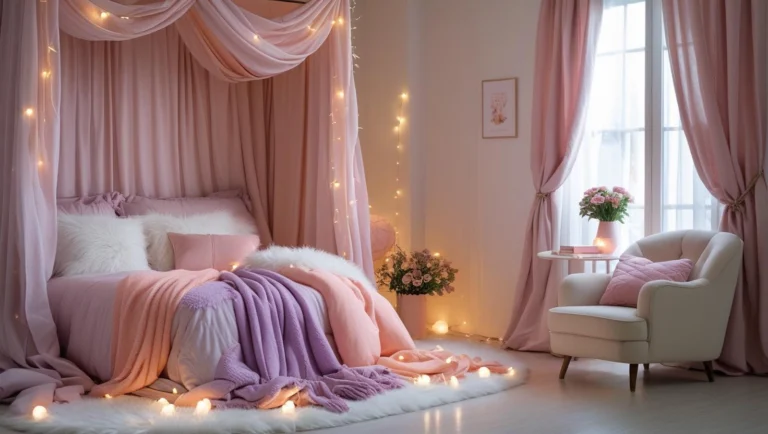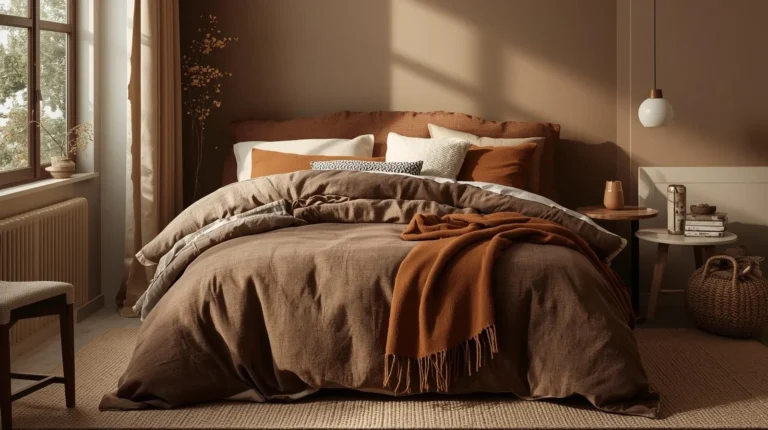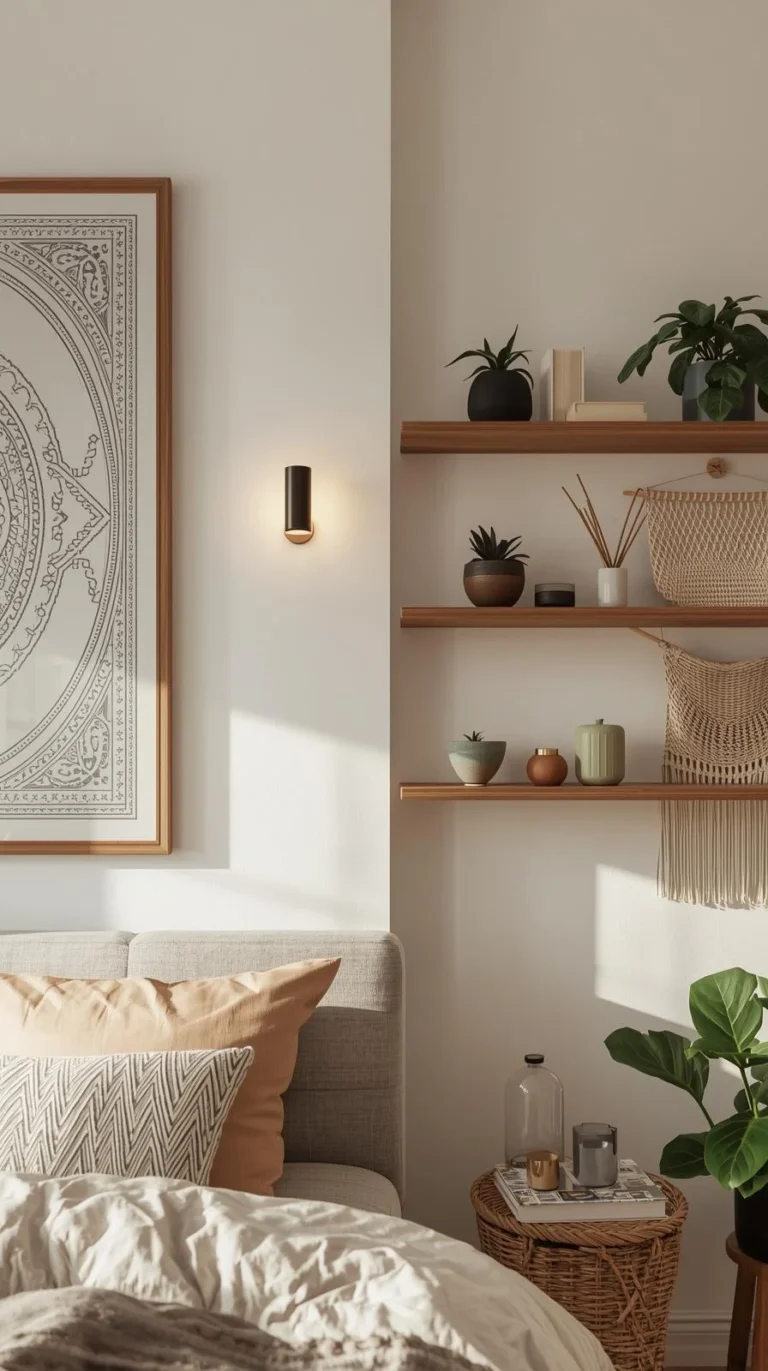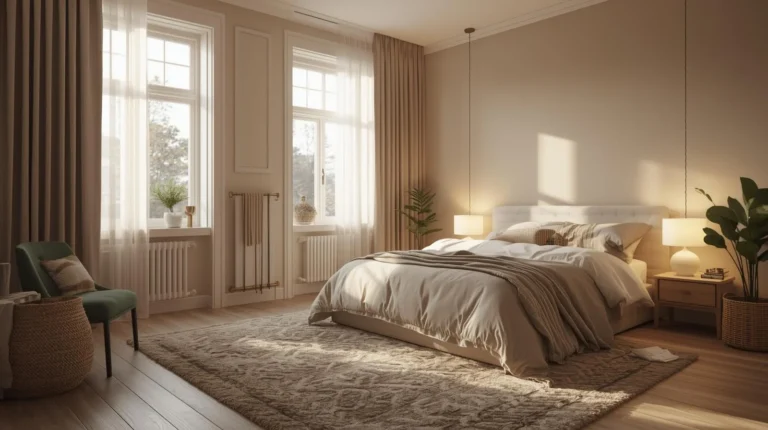10 Moody Bedroom Ideas That Bring All the Cozy Vibes
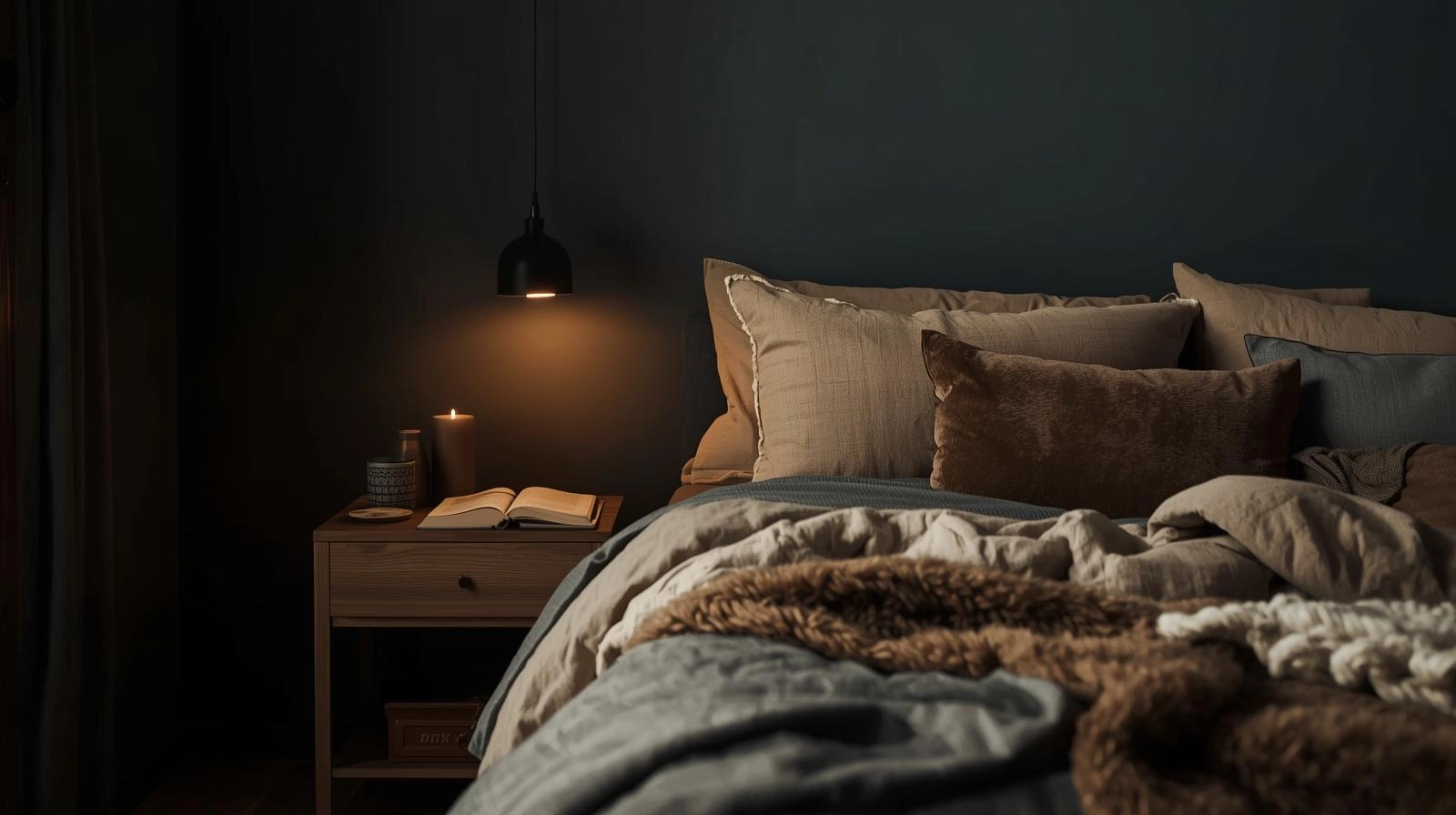
There’s something about a moody bedroom that just pulls you in. It’s calm, grounded, and deeply personal — the kind of space that makes you slow down. While bright rooms can feel cheerful, a darker tone gives comfort in a different way. It wraps around you like a soft blanket. The right mix of color, light, and texture can turn any bedroom into a cozy retreat that feels both relaxing and lived-in.
These ideas will help you create that calm, cocoon-like feel without losing warmth or comfort. Whether your space is large or small, each one focuses on what actually makes a moody bedroom work — not just how it looks, but how it feels when you’re in it.
1. Start With Deep Wall Colors

The wall color sets the mood first. In a cozy moody bedroom, you want tones that feel rich but soft on the eyes. Deep charcoal, warm brown, or muted navy can make the room feel grounded. These colors absorb light instead of bouncing it around, which instantly creates a sense of calm.
Painting all four walls might sound bold, but once you do, the space feels intimate in the best way. The darker background allows everything else — bedding, wood tones, or soft lighting — to glow gently. If you’re not ready to commit to full coverage, painting just one wall behind the bed can still shift the feel. The goal isn’t to make the room dark; it’s to make it calm enough that you breathe slower when you walk in.
2. Layer the Lighting

Light is what makes a moody room work. Overhead lighting often feels too sharp, so the trick is to layer softer light from multiple sources. Think lamps, wall sconces, or candles that add a warm tone rather than a bright glare.
A bedside lamp with a fabric shade gives a gentle glow, while wall sconces on dimmers can adjust to your mood. Warm white bulbs bring out the best in darker colors, giving them depth instead of dullness. The magic happens when the light bounces off textured surfaces — a velvet pillow, a linen curtain, or a wood nightstand. It feels like the room is quietly glowing from within.
3. Bring in Natural Texture
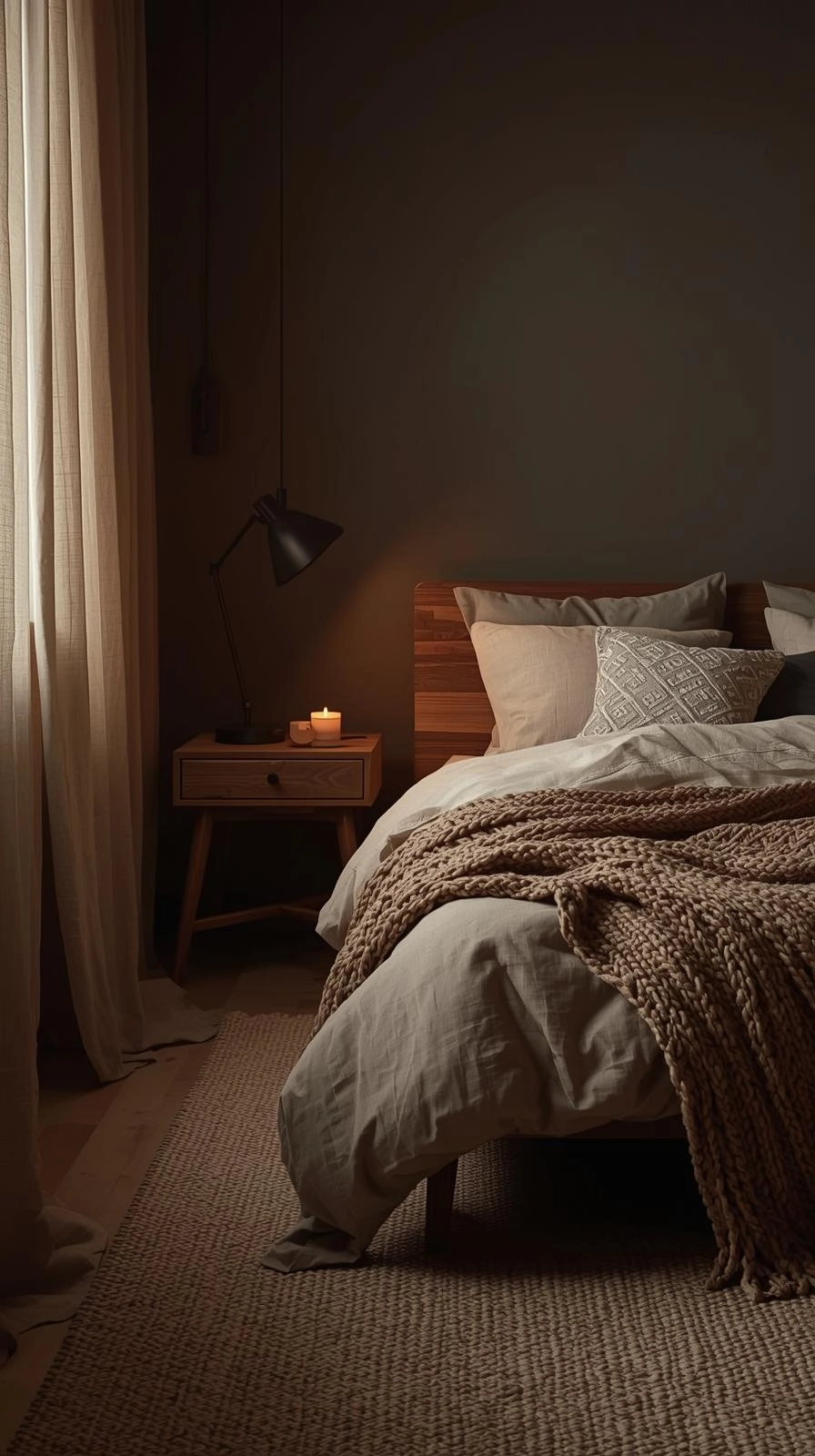
When your base colors are dark or muted, texture becomes the star. A mix of materials — like wood, linen, wool, and metal — keeps the room from feeling flat. Texture adds movement to a space, which keeps it interesting even without bright colors.
A wooden bed frame or side table adds warmth and grounds the look. A chunky knit blanket softens the lines. Linen curtains or bedding help the room breathe and catch the light naturally. Even a slightly worn rug can make the space feel like it’s been lived in and loved. The right textures balance the darkness with a sense of warmth, which is what makes a moody room so inviting.
4. Choose Bedding That Feels Lived-In

Your bed should be the coziest part of the room. In a moody setting, that means using layers that look soft and feel easy to sink into. Crisp white bedding can feel too sharp here. Instead, go for tones that blend with the room — like soft gray, olive, clay, or even dark plum.
The key is to mix materials. A cotton base layer keeps it breathable, a quilt adds comfort, and a heavier blanket or duvet gives weight. When you let the sheets and blankets drape naturally rather than fold them perfectly, it adds to that relaxed mood. The look isn’t messy — it’s lived in. It makes you want to sit down, not just admire from the doorway.
5. Play With Shadows and Reflection

Shadows give moody bedrooms their charm. Instead of trying to fight them with bright light, let them be part of the design. A corner that fades into shadow can make the space feel deeper and more private.
If the room starts to feel too heavy, balance it with small reflective surfaces. A mirror on one wall or a metal accent like a lamp base can catch bits of light and bounce them softly around the room. The mix of dark and light creates movement and keeps the space from feeling closed in. It’s not about perfection — it’s about contrast that feels calm and intentional.
6. Add Personal Layers That Tell a Story
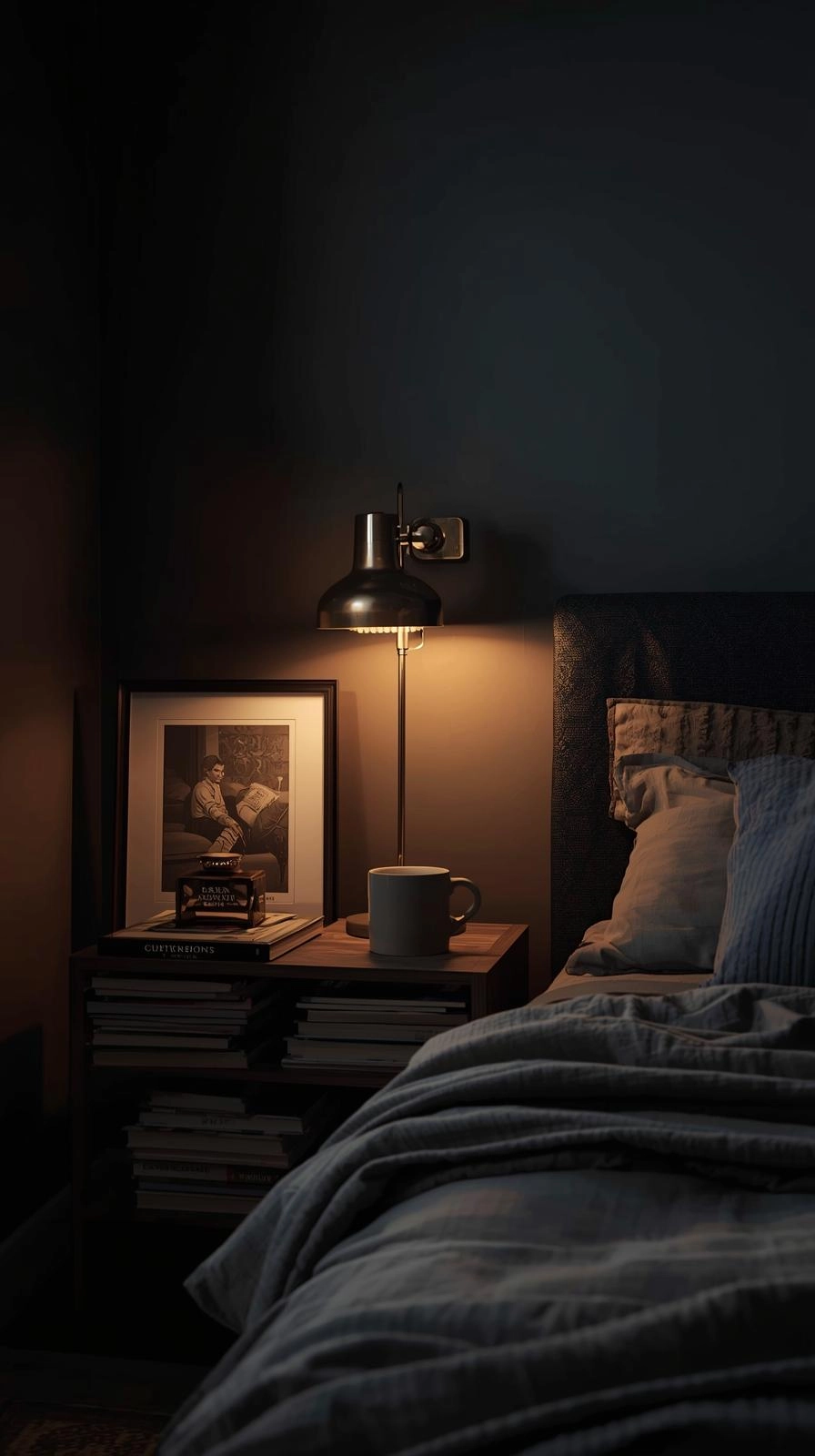
A moody bedroom works best when it feels like your story lives in it. Personal touches give life to the darker tones. Art, books, or old photographs break the mood just enough to make it real.
Choose decor that means something to you — not just what looks trendy. A stack of well-read books on the nightstand, a framed print that reminds you of a trip, or a vintage lamp that has history behind it all add depth. These details make the room feel authentic, not staged. When the decor feels connected to you, the mood shifts from “styled dark space” to “my space.”
7. Use the Right Balance of Matte and Shine
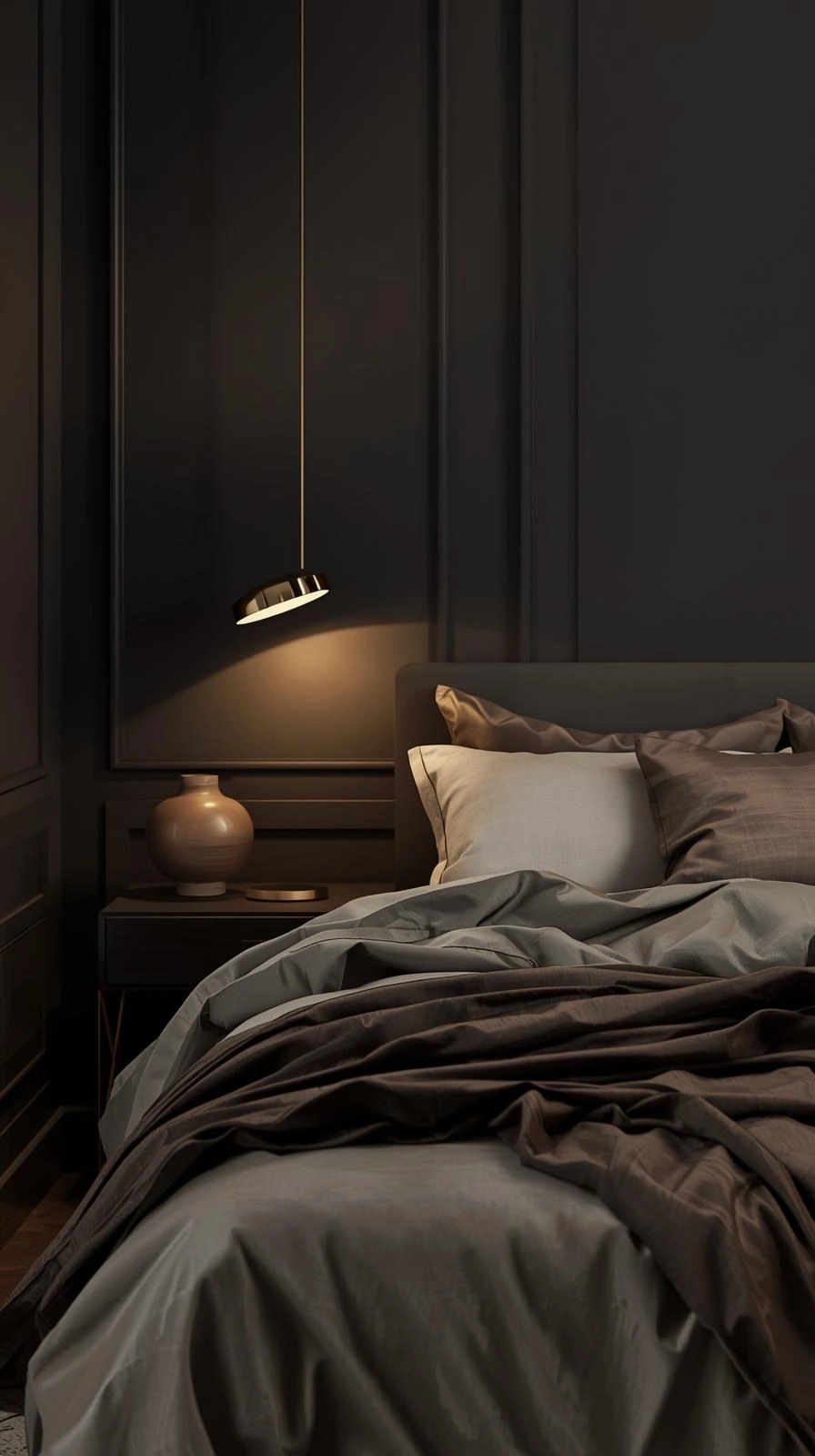
The secret to making dark rooms cozy instead of dull is contrast. Matte finishes absorb light, while shiny surfaces reflect it. Using both gives the space life.
For example, matte paint on the walls makes the background soft and deep. Then a glossy vase, brass accent, or satin pillow adds a glimmer that breaks up the heaviness. This subtle play between dull and bright keeps the room balanced. It’s something you might not notice right away, but you feel it when you’re in the space. Everything looks quietly put together without trying too hard.
8. Bring Nature Indoors
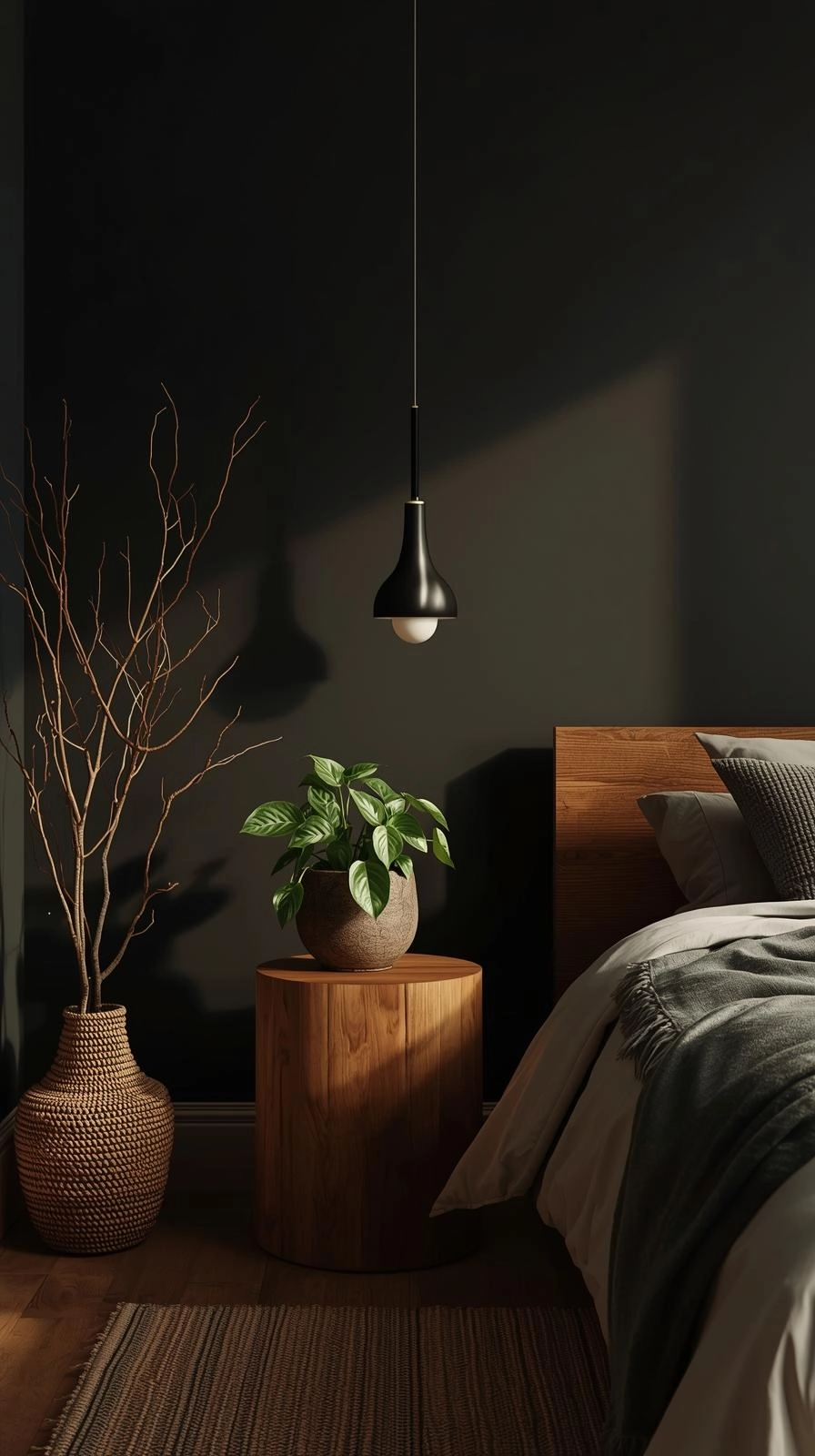
Even in darker spaces, natural elements add warmth and comfort. A moody room can benefit from a little green life. A plant in a ceramic pot or a vase of branches adds a living element that softens the edges.
Choose plants that can handle lower light, like snake plants or pothos. Their rich green tones blend beautifully with deep walls. Wooden furniture, woven baskets, or rattan details bring that same natural touch. Nature has a grounding effect — it balances the dark tones and keeps the room feeling fresh instead of heavy. It’s a quiet reminder of the outside world, even when you’re tucked in.
9. Soften the Edges With Fabric
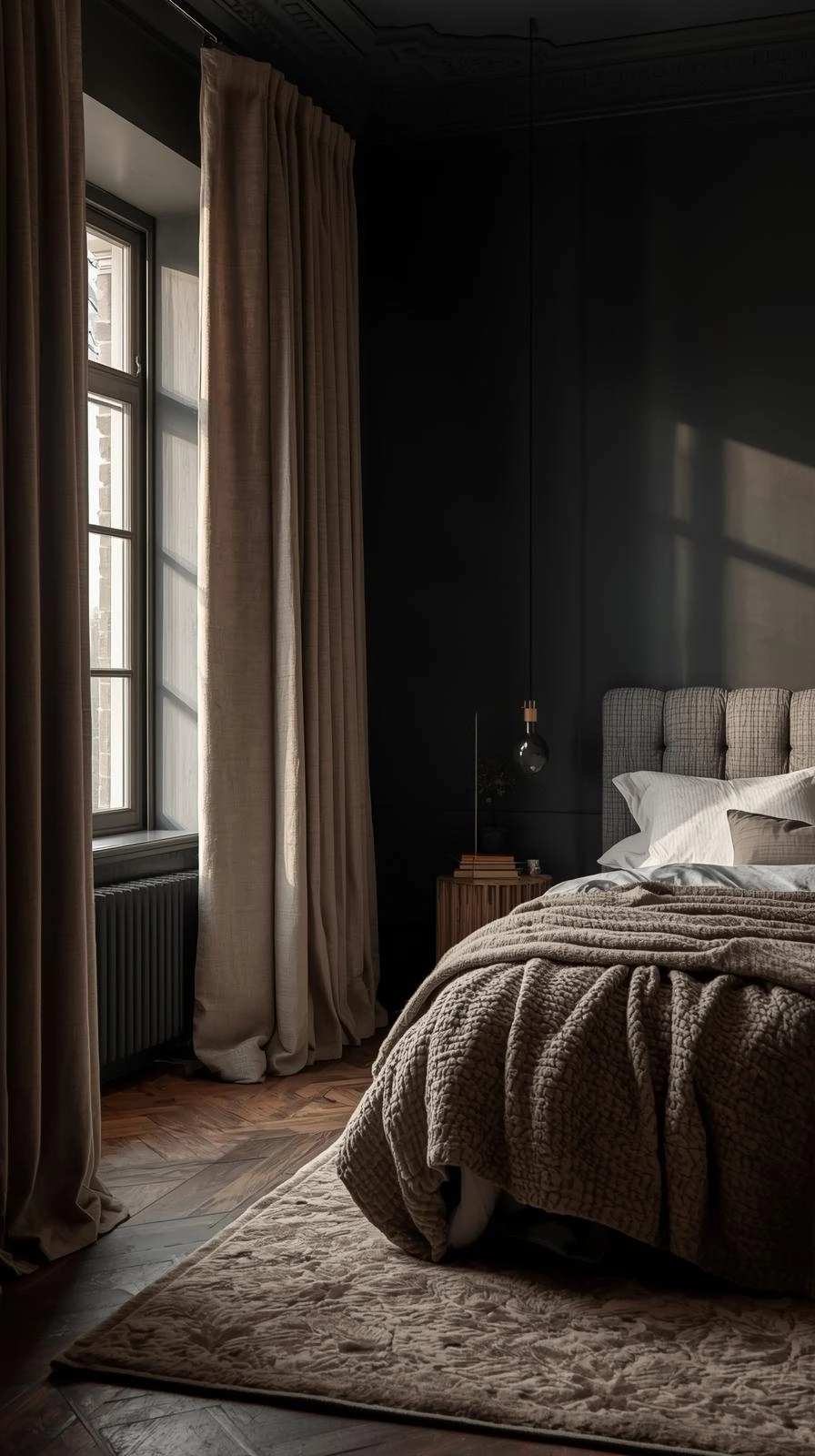
Fabric changes everything in a moody room. Curtains, rugs, throws, and even upholstered headboards help soften the hard lines that come with darker colors. The more layers of fabric you add, the more sound and light get absorbed — and that’s what creates the cozy hush you feel in these spaces.
Floor-length curtains in linen or velvet can make the room feel taller and calmer. A thick rug underfoot adds comfort and warmth. When fabric moves slightly with the air or catches a bit of light, it adds life to the space. This softness makes the darker tones feel intentional, not overpowering. It’s the difference between a dark room and a cozy one.
10. Keep the Space Minimal but Meaningful
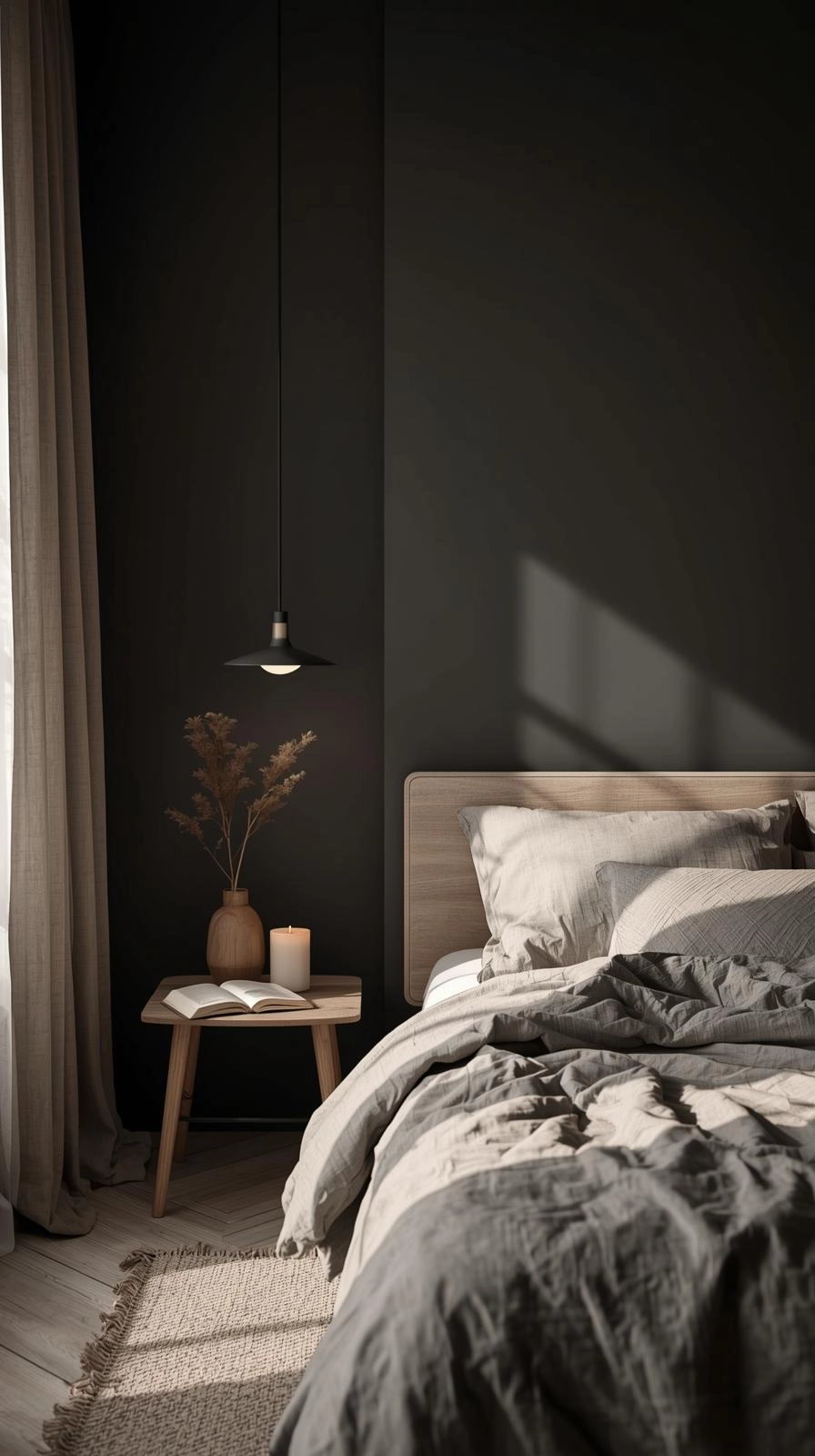
A moody bedroom doesn’t need much to feel right. Too many items can take away from the calm you’re trying to create. The goal is to have fewer things that matter more.
A simple layout with space to breathe lets the textures, tones, and lighting do the work. Keep surfaces like dressers or nightstands clear except for a few essentials. A candle, a book, or a small vase is enough. When every piece has purpose, the room feels peaceful and grounded. Minimal doesn’t mean empty — it means everything that’s left truly belongs there.
This restraint is what makes the mood powerful. It’s not just about design; it’s about creating a space where you can actually rest.
Why Moody Bedrooms Feel So Comforting
There’s science behind why we feel calmer in moody spaces. Darker tones signal to our brains that it’s time to unwind. Soft light reduces stimulation, making it easier to relax and fall asleep. Textures like linen and wool activate our sense of touch, which creates physical comfort as well as emotional calm.
A moody bedroom taps into those senses. It’s less about decorating and more about shaping how a space feels. When done right, it doesn’t just look warm — it feels like exhaling after a long day. That’s what sets it apart from other styles. You can walk into a moody bedroom at any hour and feel at ease.
How to Keep It Cozy Year-Round
A moody room doesn’t have to feel heavy all the time. With small changes, it can adapt through the seasons. In colder months, layering more texture with blankets or rugs adds warmth. In warmer months, lighter fabrics and softer colors can freshen the space without losing its calm base.
You can also change the mood with scent — woodsy candles in winter, fresh linen sprays in summer. The same walls and furniture can shift in feel depending on what surrounds them. It’s one of the reasons moody bedrooms stay timeless: they grow with you, not against you.
Final Thoughts: Making the Mood Yours
A moody bedroom isn’t about copying a trend. It’s about creating a feeling that helps you slow down, breathe, and feel at home. The best ones have balance — light and dark, soft and solid, old and new. They feel personal, not styled.
When you walk into your bedroom and instantly feel calm, you’ve done it right. It doesn’t need to be perfect. It just needs to feel like you.
Moody bedrooms aren’t cold or gloomy when done right. They’re warm, grounded, and endlessly cozy — proof that sometimes, less light brings more peace.

